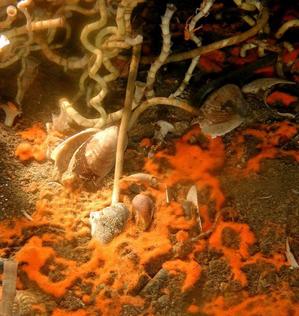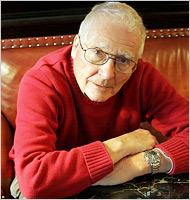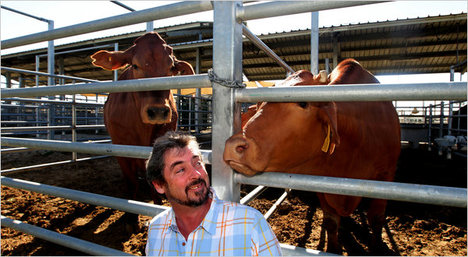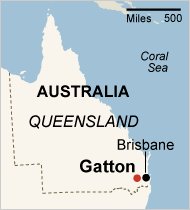(p. D8) Frank Sliney, 75, former marine and chief executive of the 25-year-old Franmar Chemical (motto: “solutions from soybeans”), in Bloomington, Ill., which originally manufactured nontoxic soy-based cleaning products for industrial workers and has now expanded into green cleaning products for home use, replies: “My house is 4,800 square feet. I’m a rich guy. We lived in a little apartment, I worked for 20-plus years building this company. I drive a Lexus 460. I worked like hell all my life and paid my bills and never was on public aid.”
But isn’t your house too big for two people?
“Right,” he answered. “Why don’t we go out and bring in a family of 12 and adopt them? There are those who would prefer to plow golf courses under because of the water and chemicals they use. There’s no end to it. On a daily basis, I do more to save the earth than 10 people — I replace 32 tanker cars of mineral spirit with one tanker of soy. The soy will biodegrade in 28 days, the mineral spirits will go on a long time.”Oops, Sorry, We Appear to Have Put
Mr. Sliney in the Wrong Section“People who say, ‘We could grow our own fuel?’ that is really silly,” Mr. Sliney continues. “Call the American Soy Bean Board — you know how many gallons of fuel they’ll tell you you can get out of an acre of land? Three or four gallons per bushel per year. How many gallons of gasoline do we use in a day? Twenty-two million.”
Make That the Wrong StoryMr. Sliney: “You know what I think? If you wake up in the morning and your biggest concern is trash cans or what kind of window sprays you’re using, you are having it good. There are people who wake up and their biggest concern is getting fed.”
For the full story, see:
JOYCE WADLER. “Green Guilt.” The New York Times (Thurs., September 30, 2010): D1 & D8.
(Note: the online version of the article is dated September 29, 2010 and has the title “Green, but Still Feeling Guilty.”)
(Note: sub-heads in original and bolded in original.)




